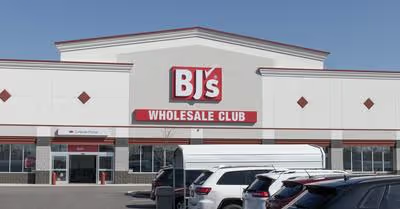Table of Contents
Low Income Programs For Seniors
Below are the various benefits programs for seniors and retirees, and how they can become eligible for these benefits.
Social Security Benefit
When you are working, you will pay Social Security tax besides your federal income tax.
So, for every check you receive there is a withholding amount that comes out of your pay. This is 6.2 percent of your earnings, and in addition to that, your employer contributes 6.2 percent of your pay on your behalf and this gives you a total of 12.4% paid in Social Security tax.
If you are self-employed, you will be paying the full tax because there is no employer to pay the remaining 6.2%.
So, the question is as you are paying this tax, where does it all go? Your social security tax and a few similar taxes are getting paid into the Social Security trust fund.
The trust fund is broken up into two separate parts, one is for retirement and survivors’ benefits, and the other is for disability benefits. Out of that trust fund, payments are made to current beneficiaries of Social Security.
First, your tax dollars go into the Social Security trust fund, but they are routed to the federal treasury. And then the Treasury issues special bonds back to the trust funds that can be redeemed at any time for cash. These are often called worthless IOUs and ultimately they carry the Full Faith and Credit of the United States government.
So these funds are not going into an account with your name on it earmarked for down the road, they are paying for those individuals who are receiving Social Security benefits today. It is referred to as a pay-as-you-go system.
Medicare
Medicare is under the auspice of the Center for Medicaid and Medicare Services, CMS. CMS is a division of the Department of Health and Human Services of the US government.
Medicare is like health insurance that is available especially for seniors that are 65 and older. However, it also could be for someone who is qualified for Medicare based on disability premises.
Seniors will have a government-issued Medicare card and that Medicare card will have a specific subscriber ID that is not their social security number.
There are many facets of Medicare, Part A is the hospitalization part of Medicare that everyone gets just like a birthright. Beyond that, Part B is like the health insurance for doctors, and Part C is the managed care portion.
On the most basic level, Medicare for seniors is simply another payer class, and a very important one at that because 10,000 people per day are aging into Medicare.
The Department of Health and Human Services oversees this, they set the rules, and therefore the Office of Inspector General of HHS is the oversight of this program.
Supplemental Security Income SSI
SSI is designed to help seniors and disabled who have little to no income, but how does it work exactly?
People get confused when differentiating between Social Security Benefits and Supplemental Security Income. However, SSI is a program that exists for those who basically live below the poverty line.
If you collect food stamps or have subsidized housing, there's a very good chance you also are eligible for SSI. SSI is important when seniors have not contributed enough to the system through their work wages to be eligible for social security.
For example, a senior who suddenly becomes disabled and has no work history could be eligible to receive SSI provided he or she is living under the poverty line. Also, for seniors whose obligations have given them a spotty work history, even though they don't qualify for social security benefits through work wages, they can still be eligible for SSI as long as they live under the poverty line.
However, there are other assets and income restrictions for collecting SSI. Generally speaking, you cannot qualify for SSI with $2,000 or more in resources. This isn't usually a problem for SSI seniors unless they have any kind of retirement savings such as a 401k.
With 401k or any other investment or savings above the $2,000 mark, you cannot get SSI until you finish that money. Also, if you are married and your spouse is working, SSA will look at your spouse's income and total combined household earnings to determine if you are eligible for SSI.
Social Security will provide more SSI payout if you can prove medical disability and if you meet the non-medical guidelines for financial eligibility. However, oftentimes there could be a reduced amount of monthly SSI, this is because SSA looks at what is called in-kind contributions to a person’s daily expenses.
For example, if a senior is living under the poverty line but they live with a relative or a partner that provides free rent, free food, free electricity, etc. SSA is very likely to deem those contributions as in-kind contributions, and this will result in a reduced amount of SSI to such a senior.
But if a senior is currently living with a relative while the SSI review is pending and they plan to move out, as soon as it is awarded, the senior has to contact their local office and inform them of the change in circumstances, so that amount of monthly premium can go back up.
Other things that can affect SSI eligibility are earned income, unearned incomes, In-kind income, and deemed income.
Earned income is exactly what it is, income from wages. But unearned income is those that you earned from things like pensions, unemployment benefits, disability benefits, and dividends cash from friends.
In-kind income is food or shelter that you receive either for free or for a price that is well below market value. Deemed income is income from your spouse.
After you have applied, have been approved and now receiving SSI checks, it is really important that you abide by the rules. You have to remember that you cannot have more than $2000 resources each month without it affecting your SSI payment, and you need to be reporting all resources and income each month.
Also, if you are saving too much money you need to report it. Actually, there are a whole host of things that trigger a report to the Social security administration. You need to make sure that you report if somebody has given you food or free housing if you get married, divorced, change your name, leave the country, etc.
The SSA really wants to encourage independence, so there are work programs and waivers out there that seniors would have to make more money and still keep the SSI benefits.
Food Assistance Benefit
Food assistance benefits and food stamps is a program to help low-income earners in America get more food. It is often referred to as the first line of defense against food insecurity. In certain states, the food stamps program may go by other names.
For example, it is called Calfresh in California and Foodshare in Wisconsin. These names are unique but they all refer to one program: the nationwide Supplemental Nutrition Assistance Program, also known as SNAP or food stamps.
So how do they work? It's actually very simple. Once you apply and get approved for food stamps, you will receive the electronic benefits transfer card also known as an EBT card. The amount of money you receive on your EBT card will vary depending on income or family size.
This card can be used to purchase certain approved items in stores that accept EBT. These items include produce, bread, canned goods, meats, and other groceries. As a general rule, you cannot purchase non-food items, nutritional supplements, or alcoholic beverages with your EBT card.
When you check out, the EBT card works just like an ordinary debit card. If you purchase eligible and non-eligible items together, you will swipe the EBT card first. It will pay for all the eligible items in your transaction. You will then be left with the remaining balance for anything that was not eligible to be bought on food stamps.
How can you apply? You will need to apply with your state's Department of Health and Human Services. Depending on what state you live in, your agency may have a slightly different name. You can also apply online.
Once you have an EBT card, you can do a lot more than just buy groceries. Your EBT card can unlock hundreds of discounts and freebies across the country. There are at least 450 freebies and deals that you can get just for having an EBT card.
Discounted Phone and Internet Service
This is a subsidy program for telecommunications services that make it easier for certain low-income seniors and families to afford a home phone landline, some bundled phone, and internet, or even a cell phone.
It is made possible by the Public Service Commission with the idea that families could benefit from a little extra assistance making it easier to connect to the doctor, school, or a community service lifeline.
Also, this subsidy could either be sponsored by the federal or state government or a joint federal and state subsidy, depending on which phone provider the senior is using.
The phone bill will be decreased a little bit making it easier to afford telecommunications. It is a service that is available on a one per household basis.
How to apply for the program and who is eligible to apply is done through the National verifier tool. This screening tool will walk you through some eligibility questions and determine if you qualify.
Then, the National verifier tool will direct you to a service provider that can then fill the application form with you. So the verifier itself is not the application form it is the first step in applying. After taking you through the eligibility questions, it will point you to a provider, and they will get you hooked up with the subsidy you are most suitable for.
Apart from low-income earners, anyone that participates in benefit programs such as SSI, Medicaid, food share or food assistance, public housing assistance programs can be eligible for this program.
Discounted phone and internet service can also apply to somebody that is at or below 135% of the federal poverty level. This is typically the income threshold that the national verifier tools and federal poverty level calculator look out for.
Home Energy Assistance
Home Energy Assistance Program is a federal program that is designed to allow low-income seniors and residents to receive utility assistance, and this helps them pay for their cooling and their heating bills.
The program provides direct payments to individuals that qualify and in order to be eligible seniors have to be considered low-income earners by the government. The criteria for this change from year to year but the income is majorly based upon household size.
How to apply. even though this is a federal program it is coordinated at the local level so you have a couple of points of contact either in the state HEAP office, your local power company, or a local office.
To begin the application process, visit the HEAP website where you will see an infographic of the 50 states. Click on your state and you will get the call number of your local state office to put you through the entire process
They also give you a listing of local utilities where you can apply directly. You just have to scroll through them to find the utility company in your area.
Recent Articles
















